The Heights Development: Empowering Sustainable Futures
While Twin Cities Habitat for Humanity works to create, preserve, and promote affordable housing in the metro area, we’re also one of the leaders in...
2 min read
 Guest Blogger
:
8:00 AM on April 22, 2023
Guest Blogger
:
8:00 AM on April 22, 2023
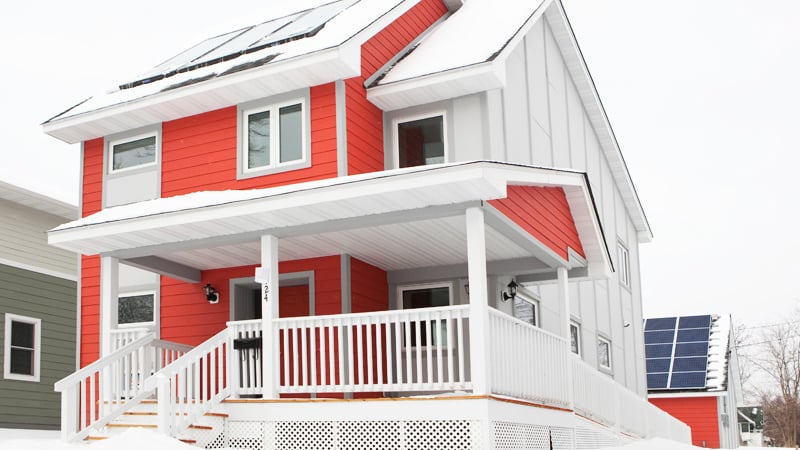
Guest Blog by Mike Robertson
A Brush with Kindness Program Manager, Twin Cities Habitat for Humanity
Twin Cities Habitat has long been a leader in sustainable building design and construction. From using Green Label materials during construction to making sure all of our homes meet Energy Star or LEED standards and are zero-energy ready, we consistently provide housing that is not only affordable but that also far exceeds the minimum building code for energy efficiency. We do this because it’s good for the environment and because it helps Habitat homeowners by providing lower energy bills and a safer, more comfortable home. For an inspiring example, check out the "net-zero energy" Habitat home built ten years ago.
As we recognize the urgency of addressing climate change, we’re taking further steps to prioritize decarbonization and electrification in our homebuilding.
This year, we’ll build seven homes with solar panel arrays that will offset 100% of electrical energy consumption. Solar is “low-hanging fruit” from a sustainability standpoint. It’s relatively easy to incorporate into our plans, and funding support from the City of Minneapolis Green Cost Share program and Xcel Energy’s Income-Qualified Solar Rewards program means we can add solar without impacting affordability. Homeowners also have the ability to monitor their system using an app that shows exactly how much energy is being produced and alerts them if there’s a problem with the system. And many of the Habitat homes without solar panels installed are built to be "solar-ready."
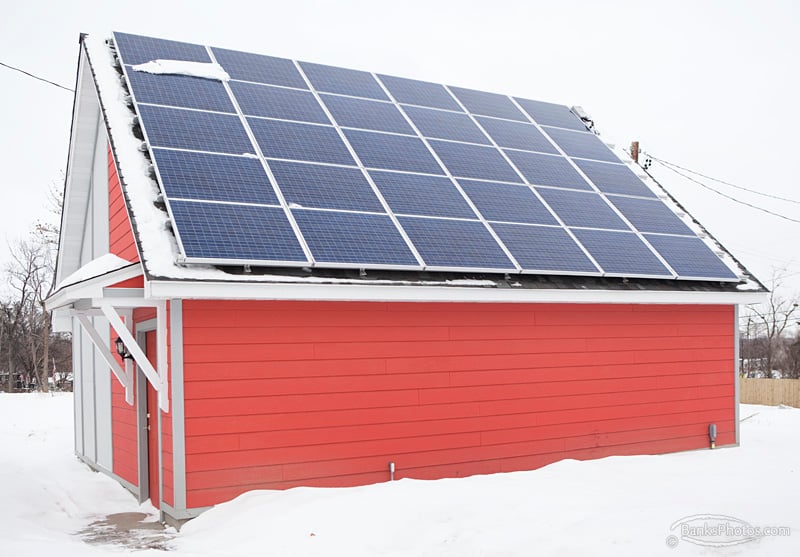
The garage of a Habitat home had solar panels installed on the top.
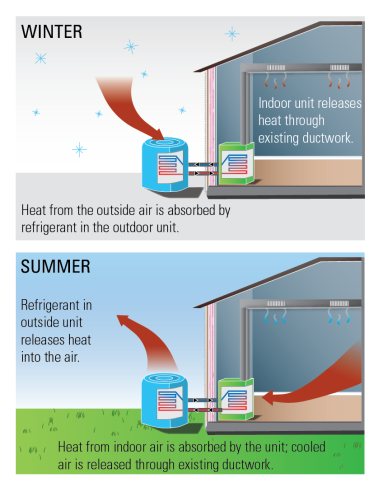 An Air Source Heat Pump (ASHP) is a highly efficient electrically powered system that uses refrigeration technology to provide heat in the winter and air conditioning in the summer without burning fossil fuels. Specifically designed for cold climates, an ASHP can operate in below-zero temperatures in the winter and has an electric resistance back-up for extreme conditions.
An Air Source Heat Pump (ASHP) is a highly efficient electrically powered system that uses refrigeration technology to provide heat in the winter and air conditioning in the summer without burning fossil fuels. Specifically designed for cold climates, an ASHP can operate in below-zero temperatures in the winter and has an electric resistance back-up for extreme conditions.
A grant partnership with the Minnesota Center for Energy & Environment through the Environmental Protection Agency is helping us pilot the installation of ASHP units in Dakota County. As we learn more about the technology and how to best fund it, we’ll be expanding our use into more of our new construction projects.
Photo of how Air Source Heat Pumps work taken from EnergyStar.gov.
The Inflation Reduction Act is a federal law that will allocate $27 billion to help transform the U.S. economy from its dependence on fossil fuels for power generation to widespread use of renewables like wind and solar. For residential housing, it also incentivizes the adoption of highly efficient air source heat pump technology to replace traditional gas furnaces, water heaters, and clothes dryers. Rebates are already available for homeowners purchasing this type of equipment, and we expect a significant increase of incentives in the future, especially for organizations like Twin Cities Habitat that work in disinvested communities.
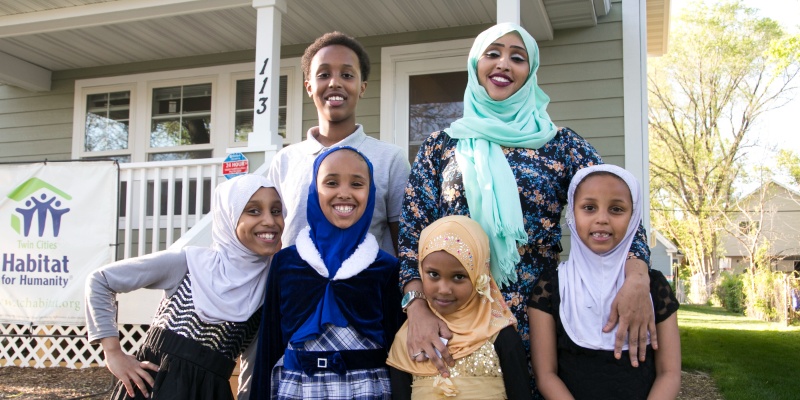
These initiatives align with our organizational values around both innovation and equity. Historically, new technologies are adopted by the wealthiest members of our society and then “trickle down” to those at lower income levels. But several environmental studies have demonstrated that disinvested communities are already suffering the worst effects of climate change – from indoor air quality to heat island effects – and can most benefit from the cleaner, more efficient mechanical systems and appliances.
Twin Cities Habitat is “flipping the script” about who benefits from these technologies by providing them to first-time homebuyers who typically make 60% of the Area Median Income ($70,400 for a family of four). With help from utility rebates and public funding sources, our hope is to continue down this path toward sustainability in everything we do.
Looking for more resources to help make your home more energy efficient? Check out our A Brush with Kindness home repair page—it's chock full of helpful resources!
Your gift unlocks bright futures! Donate now to create, preserve, and promote affordable homeownership in the Twin Cities.
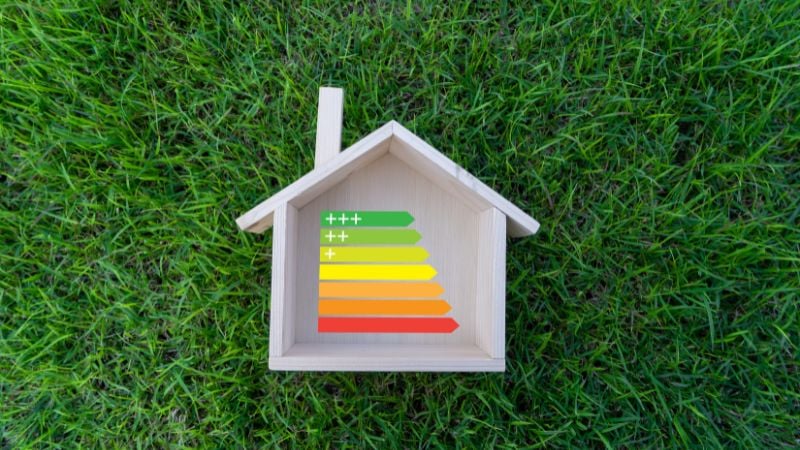
While Twin Cities Habitat for Humanity works to create, preserve, and promote affordable housing in the metro area, we’re also one of the leaders in...

Our Build Forward Together strategic plan is more than words on paper—it’s a bold vision for a vibrant, equitable Twin Cities community. This...
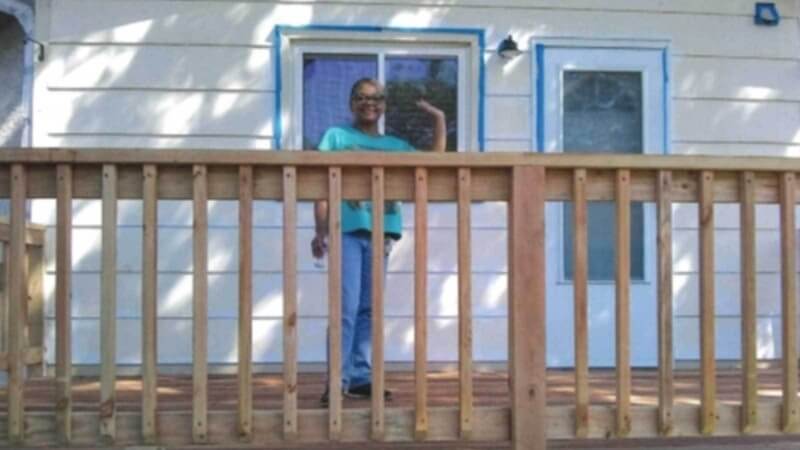
Guest Blog by Mike Robertson, A Brush with Kindness Program Manager